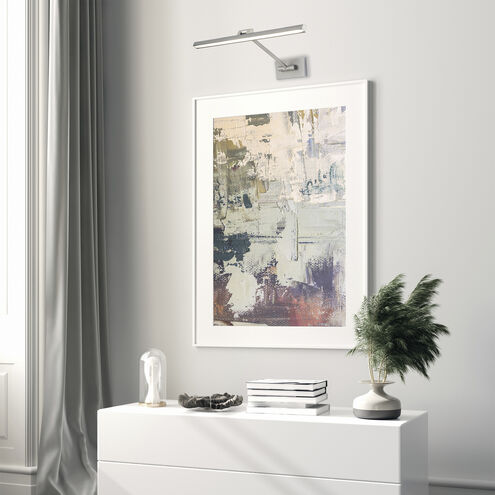Art lighting is an elegant and sophisticated way to accentuate artwork and create an inviting gallery-like ambiance in the home. More than just illumination, art lighting transforms spaces and enhances the visual appeal of treasured paintings, photographs, or any other cherished collectibles you want to showcase in the best possible light.
When done right, art lighting draws the eye to the artwork, creates visual interest and completely changes the look and feel of a room. Spotlighting pieces of art makes them pop while strategic lighting eliminates unwanted shadows or glare.
With art lighting, you don’t just see the art, you experience it. The interplay between light and shadow adds depth, drama and dimension to artwork. Lighting brings out details and colors that may otherwise go unnoticed in a piece. And the right lighting solution can create a focal point in any space, establishing a mood and highlighting what’s most important.
With the right design plan and fixtures, you can use light to transform the way you display, enjoy and experience your most treasured artwork.
We asked two of our Residential Lighting Experts to share their tips on how to light artwork like a pro.
1. Understand Your Space and Electrical Needs
When it comes to properly lighting your artwork, understanding the unique characteristics of your space is key. Consider factors such as the room size, ceiling height, windows, and existing lighting to create an effective art lighting plan. At The Light Center, we can also coordinate with experienced electricians for you to ensure that you get it right the first time.
Our knowledgeable lighting specialist with an Art (?) degree, Allison Babel, advises, “Don’t underestimate the significance of proper lighting for your artwork, and the role an electrician can play in achieving optimal results from the start.” Allison has worked on projects with clients who have premier art pieces and start out with only basic recessed cans and has transformed into a gallery level space with monorail. We coordinate with a drywall repair expert, painting pros and certified electricians to achieve top results for our clients. Once we calculated the beam angles and lumen output for each luminary, we were able to determine the number of fixtures needed to properly light 30 art pieces in one small primary bedroom hallway. We brought in a sample for the client to see in our lighting lab what the light quality and overall feel would be in their home. We determined that a narrow flood LED spotlight run on lighting “monorail” along the hallway was the best solution and found a beautiful design to fit a minimal style. Like this The Tellium display head by Sean Lavin.
In lighting design, we can produce magic in light by using tools like filters and lenses to bend or aim the light how we want. For this hallway space, we utilized a lengthening lens to make the light even as much as possible over a 9’ area top to bottom.
**Note: TLC can take the electrical off your plate and work with an electrician for you. By working in collaboration with an electrician and our lighting experts, you can address both the specific setup needs of your space and the required electrical requirements. Whether you’re dealing with a large room with high ceilings or a smaller space that requires precision lighting, our team can provide guidance to help you get it perfect the first time. Reach out to book an appointment.
This combination of expertise ensures that your artwork is beautifully showcased and that you achieve the desired results without any unnecessary hassle or additional expenses. So, when it comes to lighting your artwork, trust in the knowledge and collaboration of an electrician and our lighting experts to create an art lighting solution that truly enhances your space.
2. Consider the Artwork
When selecting lighting for artwork, it’s important to consider the details of the pieces you want to illuminate. Carefully evaluating the type, size, placement, and other factors can ensure you choose the ideal fixtures to showcase each piece.
“It’s incredible how much of a difference quality lighting can make when it comes to showcasing artwork in your home or commercial space,” says lighting expert Emmanuel Gamboa, “Colorado is bursting with an abundance of talented local artists who create these phenomenal works that are just begging to be displayed in your space.”
Type of Art
Is the artwork a painting, print, photograph, sculpture, or something else? The lighting needs will vary based on the medium. For example, if the artwork is displayed behind glass, it becomes necessary to be attentive to reflections. Or, if the artwork has warm tones, selecting the appropriate temperature of lighting, will ensure that the true colors and hues of the piece are accurately represented, without any undesired color casts.
Size of Artwork
The scale of the art will impact the type and quantity of lighting required. Larger pieces will likely need stronger, higher-wattage fixtures while smaller art can be beautifully lit with more delicate luminaires. Measure the art and plan the lighting layout accordingly.
Purpose
Consider if the art is meant to be part of a relaxing living space or displayed as focal point in a more formal setting. This will dictate the ambiance you want the lighting to achieve. Also think about how the art will be viewed – up close or from afar.
3. Choose Fixtures Wisely
When it comes to lighting artwork, you’ll want to choose the right fixtures to properly accent and spotlight your pieces. Here are some top options to consider:
MonoPoint Accent Lighting
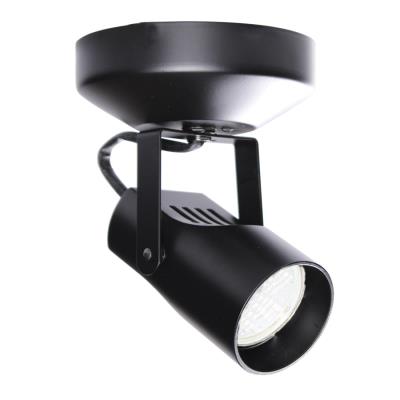
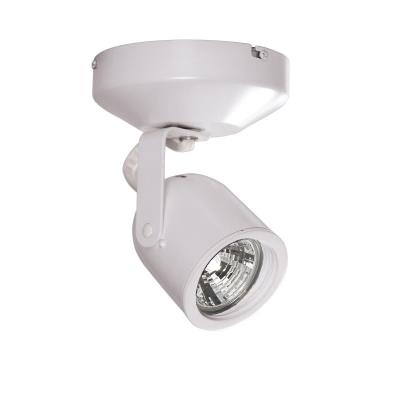
Picture Lights
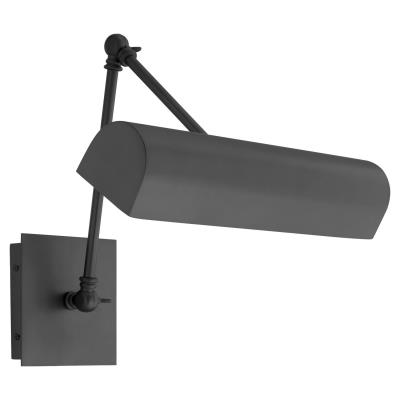
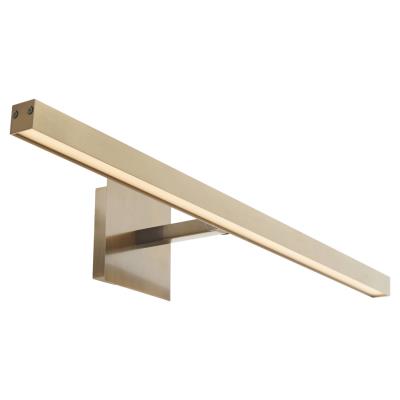
Track Lighting
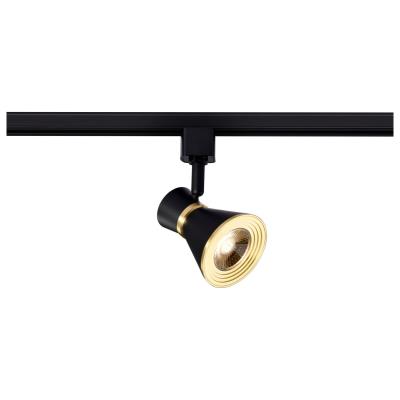
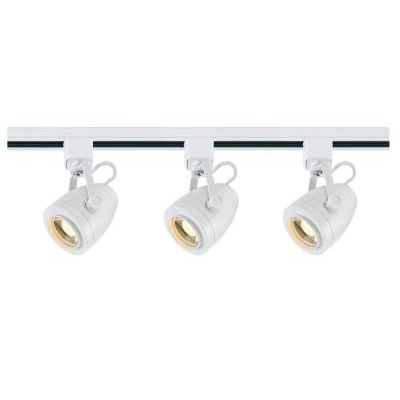
Recessed Lighting

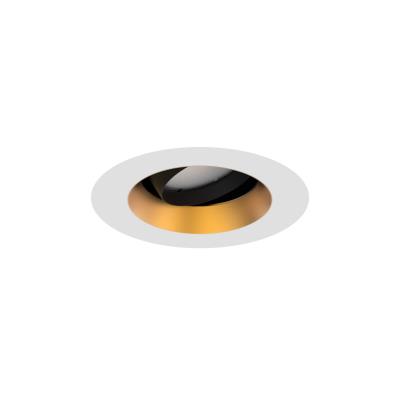
Residential lighting expert Allison notes, “I’ve noticed an interesting trend lately where clients are incorporating double recessed luminaries flanking the artwork to make the lighting an integral part of the piece itself. It’s a clever way to add interest with lighting, while also enhancing the overall impact of the artwork by bathing the entire piece with light.”
By choosing the right mix of linear, focused, downlight or flood lighting, you can achieve perfect gallery-style lighting to showcase cherished artwork. Our lighting experts at The Light Center can also help you select and install the ideal elements to create your desired look.
4. Seek Professional Advice
Designing an art lighting plan that truly enhances your space and artwork requires expertise and experience. While some basic tips can get you started, consulting a professional lighting designer is highly recommended for best results.
“A lot of people underestimate the importance of art lighting. It’s not something you can just treat as a regular fixture in your home.” says Emmanuel, “When you’ve found that perfect piece of art that speaks to your soul, it’s absolutely worth investing in the right lighting to bring it to life. Trust me, the difference it makes is astounding. So don’t skimp on the lighting. Give your artwork the attention it deserves.”
Our team of skilled lighting designers at The Light Center have years of experience designing custom art lighting for homes and businesses across Northern Colorado and beyond. We consider all the unique factors of your space, artwork, goals and preferences to create a thoughtful, cohesive lighting plan tailored just for you.
The Light Center’s expert lighting consultants offer design services including:
- An in-home design consultation to view your space and artwork firsthand
- Custom lighting plans with recommended fixtures, layouts and lighting techniques
- Advice on choosing fixtures that align with your budget
- Guidance on installation and working with electricians
We strive to not just illuminate your art, but use light to transform the entire look, feel and experience of your space. Our passion is bringing out the full beauty of your artwork while creating a gorgeous ambience for you to enjoy.
We invite you to reach out and book a design consultation to learn more about how we can design the perfect art lighting for your unique needs.




